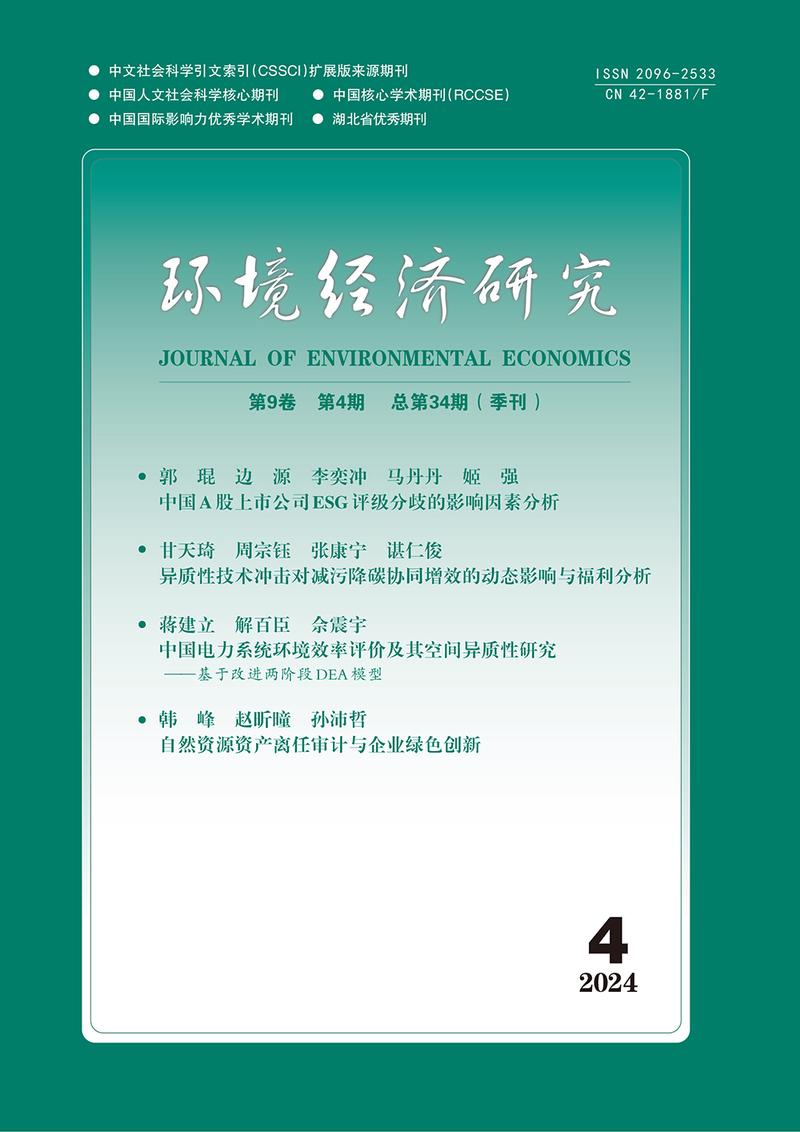摘要:现有文献关注金融发展对碳排放的静态影响,却未基于金融发展适度水平视角对二者关系进行动态刻画。本文以2003—2019年全球175个国家的国别数据为样本,构建空间杜宾模型实证研究金融发展对碳排放强度的影响,以检验最有利于碳减排的金融发展“适度水平”的客观存在性。研究发现:首先,金融发展对碳排放强度呈先抑制后促进的非线性影响,即存在最有利于碳减排的金融发展适度水平。其次,金融发展对碳排放强度的影响存在明显的空间溢出效应,金融适度发展能有效推动经济关联地区的碳减排进程。再次,不同经济发展阶段国家的金融发展适度水平存在差异,金融发展与碳排放强度在低收入国家呈正向关系、在中低等收入国家呈负向关系、在中高等收入国家和高收入国家呈先抑制后促进的非线性关系。最后利用面板门槛模型进一步分析发现,一国的金融发展适度水平受到金融发展阈值效应和经济发展阈值效应的共同影响,各国应在统筹金融发展与经济发展的基础上推动碳排放强度稳步降低。本文从金融发展适度水平视角为世界各国加速实现碳减排目标提供了经验证据和政策启示。
关键词:金融发展;适度水平;碳排放强度;空间溢出效应;阈值效应
Financial Development and Carbon Emission Intensity:A Test Based on the Appropriate Level Perspective
Dou Wei, Li Tingting, Zhang Wenqing
Abstract: The existing literatures focuse on the static impact of financial development on carbon emissions, but do not provide a dynamic portrayal of the relationship between the two based on the perspective of appropriate level of financial development. This paper constructs a spatial Durbin model to empirically study the impact of financial development on carbon emission intensity using country data of 175 countries from 2003 to 2019 to test the existence of an objective appropriate level of financial development most conducive to carbon emission reduction. The study finds that financial development has a non-linear effect on carbon emission intensity that is first suppressed and then promoted, suggesting that there is an appropriate level of financial development that is most favourable to carbon emission reduction. Notably, financial development also manifests a pronounced spatial spillover on carbon emission intensity. Harnessing the appropriate level of financial development can notably drive down carbon emissions in economically intertwined areas. Moreover, the suitability of financial development varies across countries, contingent on their economic status. Specifically, while low-income countries display a positive linkage between financial development and carbon intensity, the relationship turns negative for lower-middle-income countries. Meanwhile, upper-middle and high-income nations experience a nuanced, non-linear relationship, initially restraining but later endorsing carbon intensity. Delving deeper with the panel threshold model, we discern that the optimal financial development gradient for a country is intricately molded by the synergy between its financial and economic growth stages. Countries should promote the steady reduction of carbon emission intensity based on the integration of financial development and economic development. This paper provides empirical evidence and policy insights from the perspective of financial development appropriateness for countries worldwide to accelerate the achievement of carbon emission reduction targets.
Keywords: Financial Development; Appropriate Level; Carbon Emissions Intensity; Spatial Spillover Effect; Threshold Effect
DOI:10.19511/j.cnki.jee.2023.03.007
